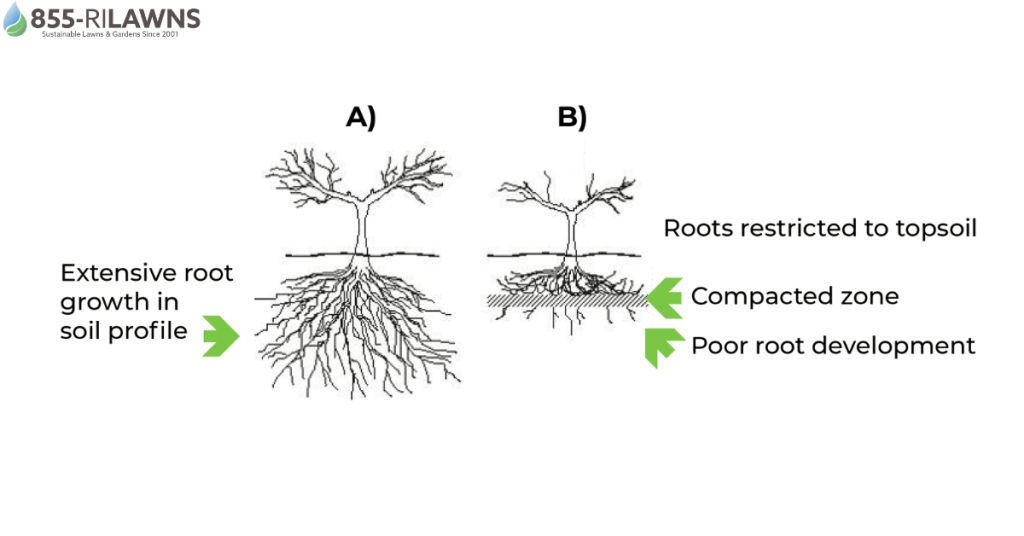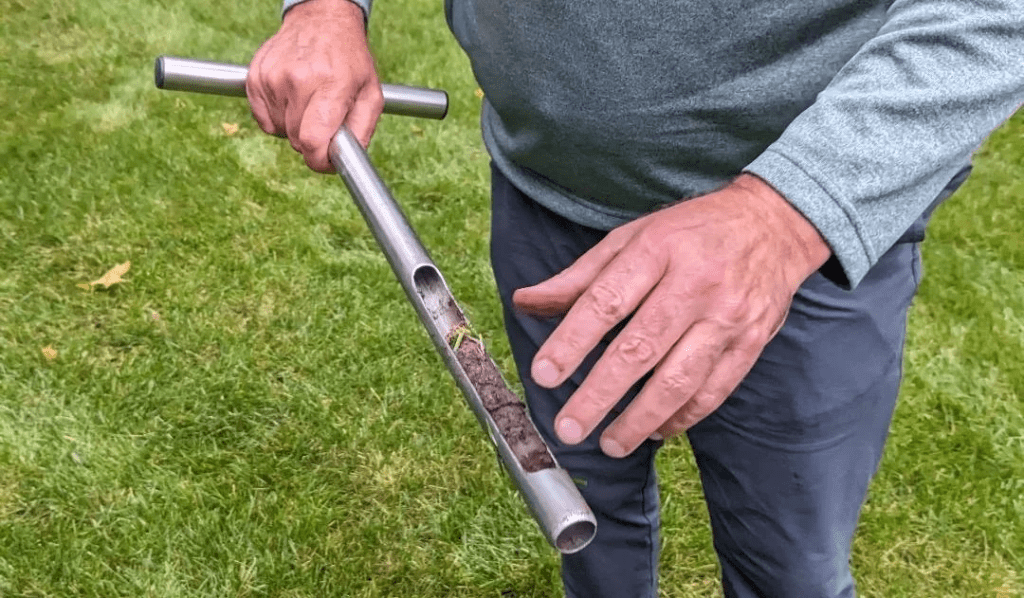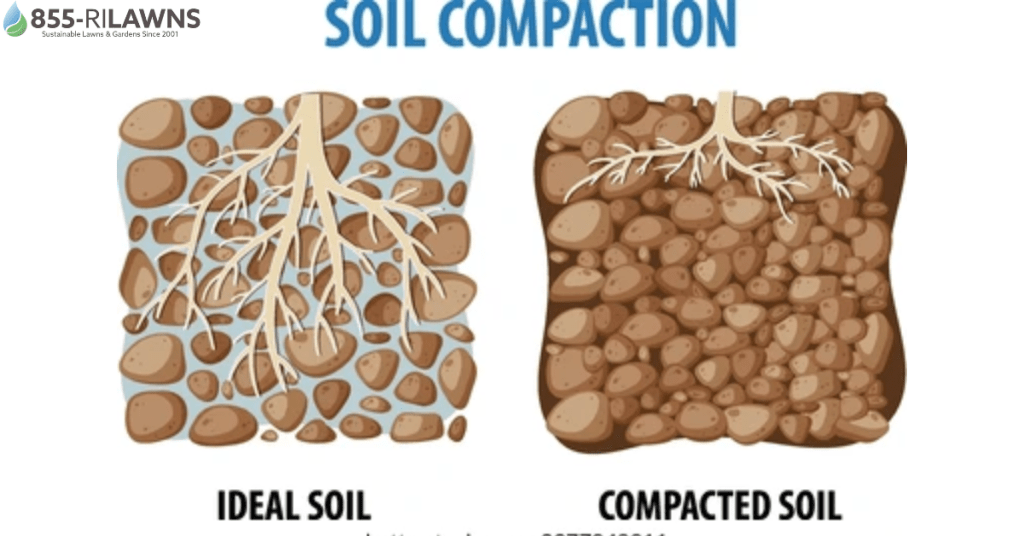Ever wondered why your lawn doesn’t look as lush as it should? Soil compaction could be the culprit. It’s a common issue that many homeowners face, and understanding it is key to having a healthy, green lawn.
So, let’s break down soil compaction and its impact on your lawn.
What is Soil Compaction?
Soil compaction happens when soil particles are pressed together, reducing the pore space between them. Think of it like squeezing a sponge. When you press a sponge, water can’t move through it easily. The same thing happens in compacted soil—air, water, and nutrients struggle to penetrate.
This compaction can be caused by various factors:
- Heavy foot traffic: Walking on your lawn regularly compresses the soil.
- Equipment: Lawnmowers or heavy gardening tools also press down the soil.
- Rain: Excessive rain can pack the soil over time, especially if it drains poorly.
Why Does Soil Compaction Matter?
You might be thinking, “So, the soil gets squished. What’s the big deal?” Well, soil compaction creates several problems for your lawn that you need to be aware of. Let’s look at a few.
Poor Root Growth

Roots need room to spread and grow. When the soil is compacted, roots struggle to move through it. As a result, your grass can’t establish a strong root system. Without healthy roots, the grass won’t absorb enough water or nutrients, leading to weak and patchy growth.
Water Drainage Issues
Water has a hard time seeping through compacted soil. Instead of soaking in, it might pool on the surface, leading to puddles or muddy patches.

This poor drainage can make your lawn more vulnerable to diseases like fungus or mold, which thrive in damp conditions.
Less Nutrient Absorption
When soil is compacted, it can’t hold onto the nutrients your grass needs to thrive. Even if you fertilize, your lawn won’t be able to absorb all those essential nutrients effectively. In the long run, this can cause your grass to turn yellow or brown, even if you’re caring for it properly.
How to Check for Soil Compaction
Before you dive into fixing the issue, you need to confirm if soil compaction is the real problem. Here’s a simple test you can do at home:
- Grab a screwdriver. Yes, a regular screwdriver will do the trick.
- Push it into the ground. If it goes in easily, your soil is likely fine. But if it’s tough to push through, you’ve got compacted soil.

This test is quick and easy, giving you a clear indication of whether soil compaction is affecting your lawn. Book our professional soil testing services here.
How to Fix Soil Compaction
Once you know you have compacted soil, the next step is to fix it. The good news is, with a bit of effort, you can restore your lawn’s health.
Aeration: The Most Effective Solution
Aeration is the best way to tackle soil compaction and its impact on your lawn. It involves creating small holes in the soil to allow air, water, and nutrients to get through.
There are two main types of aerators you can use:
- Spike aerators: These poke holes into the soil. But be careful—sometimes they can actually make compaction worse by pressing the soil around the holes.
- Core aerators: These pull out small plugs of soil, which is more effective for relieving compaction.
You can rent an aerator from a local garden center or hire professional services to do it for you. Ideally, aeration should be done in the spring or fall when the grass is actively growing.
Avoid Overwatering
While it’s tempting to water your lawn frequently, overwatering can contribute to soil compaction. Water in the morning, and only when necessary. This helps the soil absorb water more effectively, reducing compaction over time.
Minimize Foot Traffic
If certain areas of your lawn experience heavy foot traffic, consider adding stepping stones or a walkway. This will prevent the soil in those areas from becoming too compacted.
Preventing Soil Compaction in the Future
Once you’ve fixed the issue, you’ll want to make sure it doesn’t happen again. Here are a few simple tips to keep your lawn healthy and free from compaction:
- Aerate regularly: Make aeration part of your regular lawn care routine, especially if you have clay-heavy soil.
- Use lightweight equipment: If you’re using a heavy lawnmower, consider switching to a lighter model. Less weight means less compaction.
- Encourage healthy root growth: Adding organic matter like compost can help improve the structure of your soil, making it more resistant to compaction.
Final Thoughts on Soil Compaction and Its Impact on Your Lawn
Soil compaction might seem like a minor issue, but it affects your lawn’s health. If your lawn is showing signs of weak growth, water pooling, or nutrient deficiencies, compacted soil could be the reason.
Ready to give your lawn the care it needs?
Get a FREE quote and book our professional fall aeration and overseeding services today. And as a bonus, you’ll get $50 off your service.


